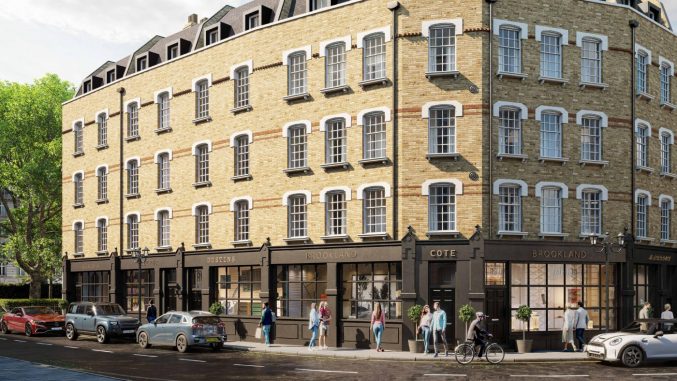Second charge sector tops £1bn for the first time since the financial crisis
By Bridging Loan Directory
The second charge market is showing sustained growth following seven consecutive months of increased annualised lending, as confirmed in the 6th edition of Enterprise Finance’s Second Charge Report.
Drawing on data from the Finance and Leasing Association (FLA), Enterprise Finance’s expertise and wider industry input, the report is an in-depth analysis of market performance for the full year 2017, with a particular focus on the final quarter. It found that the market finally broke through the £1bn a year mark, with a solid 4th quarter that topped a resurgent year for second charge mortgage lending.
When comparing the market year-on-year, £1,024m was lent in the 12 months of 2017, compared with £874m in 2016. For 10 months in 2017, the annualised lending total grew versus the same month in 2016, with double digit growth in 4 months, including October and November +13%, with December’s calendar year figures up +9%.
Second charge mortgage new business has particularly increased in volume of transactions. Annualised numbers of cases advanced +14.4% from just over 19,000 in March 2017 to almost 22,000 by December. This reflects increasing engagement from brokers in the second charge lending market, as alignment with first charge mortgages, coupled with better-informed intermediaries and greater product diversity have combined to fuel interest.
Some growth has also been seen in average transaction sizes, up +3% on an annualised basis. With Enterprise Finance’s experience showing just +1% in LTV rates to 62%, this suggests higher-value borrowers are increasingly comfortable with second charge mortgages for their capital raising needs.
October showed a strong start to quarter 4, with £85m lent in the month following a somewhat quiet end to Q3 with September’s £77m. November softened slightly, as a number of deals were withdrawn from the market while some reviews of lending underwriting standards took place, but nevertheless topped £80m. With the festive season in full swing in December, lending was a quieter £76m but again exceeding the £72m of December 2016.
Overall, 2017 showed a return to form after 2016’s disappointing reaction to MCD and Brexit. The middle part of the year was particularly strong, with record breaking months in both Q2 and Q3. This gives a solid platform for growth in 2018.
Market factors
Starting with the wider economy, Brexit-related uncertainty appears to have bitten in the 4th quarter as negotiations stuttered. Q4 GDP growth has been revised down to +0.4%, yielding just +1.7% for the year – the slowest growth since 2012. Consumer weakness mirrored this with house-hold spending up +1.8% – again the slowest since 2012. As the BBC reported, business investment is stagnant, as companies wait and see the likely outcomes from Brexit negotiations before committing substantially. They also reported that construction is in recession, with ONS sector-level data showing a 3rd consecutive quarterly contraction of (0.7%). Nevertheless, unemployment remains low at 4.4%, with wages up +2.5% and +0.8% in the output / hour measure of productivity, following +0.9% in Q3. These factors suggest a weak, rather than recession-bound economic outlook.
The impact of a slow economy has been a flattening of the residential property market. HMRC data showed 1,224,570 transactions in 2017, down (0.5%) on 2016. Similarly, house price indices like Nationwide’s showed price softening, with rises for the year at +2.6% compared with +4.5% in 2016, while RICS members’ future price expectations index also fell to near-neutral. Looking forwards though, both showed upticks in the early part of 2018, providing some grounds for optimism in the coming year.
UK Finance data for the total mortgage market to November 2017 showed a pattern in remortgage activity that was similar to second charge mortgages. Quieter September and November data were matched by a strong October looking month-on-month, yet with November still +10% by volume and +10% by value, year-on-year. With second charges being a substitute when the client’s circumstances make a first charge option unavailable, unsuitable or inappropriate, the shape of the remortgage market is an important comparator.
With a flat economy and housing market, the greater positivity in second charge mortgages may be driven by 3 factors: home improvements, debt consolidation and BTL second charges.
Uncertainty in buying and selling is contributing to homeowners increasingly turning to home improvements to realise their dream. This is now the largest use for a second charge loan. The London Evening Standard reported on 19th December that the number of home improvement planning applications in the region was up +25% in the last 5 years. Industry experts Barbour ABI reported equivalent national figures of +6% in 2016 vs 2015, and it is likely that they will be up again in 2017 when their next data are released in April. Likewise, New London Architecture’s “Don’t move, Improve” awards attracted their highest entries in 2018, their 8th year.
Debt consolidation is the second largest use of second charges, to reduce monthly outgoings on unsecured debts. As reported in Q3, unsecured personal debt in the UK soared to around £300bn. As markets anticipate a further 0.25-0.75% rise in the Bank of England base rate in 2018 the cost pressure of unsecured debts is likely to grow further, adding more consumer value to securing via a second charge. Second charge mortgages continue to offer relatively benign interest rates, with only a few lenders opting to pass through the recent base rate rise in the current, competitive marketplace.
Finally, an emerging niche within second charge mortgages are those secured on BTL properties. Interest in this area has grown substantially during 2017 as a result of PRA regulatory changes on affordability, following phase-out of personal tax relief of mortgage interest on private rented properties. Landlords needing to raise capital can now find themselves trapped on their current deals, secured under prior rules, and only able to do product transfers for the existing capital. Second charges can provide the appropriate alternative option for the capital the landlord is seeking.
With a reported 50% of the new mortgages written in the huge March 2016 BTL spike being sold on 2-year fixes, March 2018 is likely to see a surge in BTL refinancing as those deals expire. We anticipate burgeoning interest in second charge BTL mortgages to expand as a result.
Fees and charges
Much of the focus of recent debate in the second charge mortgage market has been on levels of fees and charges, and on their transparency. One of the most substantial effects of transition of regulatory regime from CCA to MCOB rules has been a significant reduction in fees and charges across the board.
Under CCA regulation, no fees could be levied before completion. Under MCOB rules, upfront charges can be made. That has meant a proliferation of fee models as providers look at alternative charging structures. Simultaneously, clear statements of fees on ESIS mortgage illustrations has increased visibility and transparency, while increased competition has driven fees down – by around 40% for Enterprise.
Overall, this significant reduction in costs to the borrower has also served to increase attractiveness of the second charge mortgage proposition when compared with first charge options, for clients and brokers alike.
Harry Landy, pictured, Managing Director of Enterprise Finance comments:
“Despite a quieter 4th quarter in comparison to the middle part of the year, the second charge mortgage market has had a very positive 2017. Proliferation of products, attractive interest rates and fees that, for Enterprise at least, have reduced by an average of 40% have increased the potential of the sector.
“Moreover, several fundamental drivers – increasing levels of home improvement investment, greater needs to manage growing unsecured debt and the potential of the BTL market – give us good grounds to believe that the recovery of market expansion seen in 2017 will continue in 2018.
“Clearly, the most important factor in enabling that growth remains education of the key decision-maker in any deal: the broker. As growing broker understanding is bearing fruit, it’s important not to become complacent. We have to remember that education is a long and repetitive process, so there is a lot more work to be done to ensure that all brokers really know what second charges are, when they are appropriate and should be considered, and how to place them efficiently for clients.
Enterprise continues our full commitment to building that expertise by working with our network partners as well as other agencies, to provide CPD-accredited training in this area for Appointed Representatives and Directly Authorised brokers alike. That’s good for the broker, good for us and ultimately good for the client as a result of better customer outcomes.”











You must be logged in to post a comment.